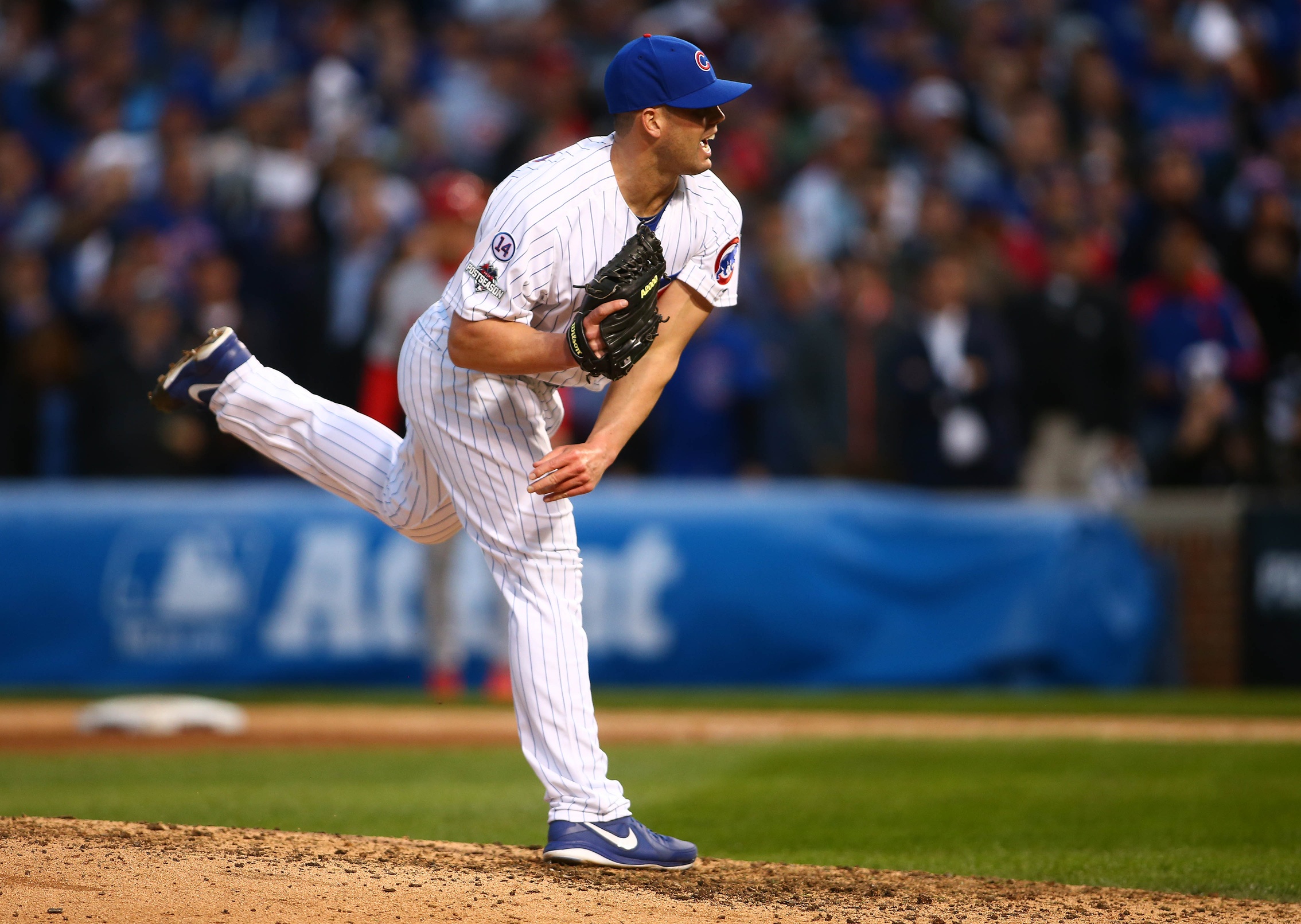Over the past month we have learned that Trevor Cahill and Adam Warren have been told–Warren explicitly and Cahill via contractual incentives–that they will be used as starting pitchers during the 2016 season. But how can this be, when the Cubs made it a priority to acquire a clear the rotation arm in John Lackey as well, thus rounding out their top five? It turns out, if you look through the numbers, that there is a way for the Cubs to stay true to their word and use both Cahill and Warren on a semi-regular basis. Oh, and also (probably) win a lot of games.
As of this post, the Cubs’ starting rotation is composed of reigning Cy Young award winner Jake Arrieta, Jon Lester, Lackey, Jason Hammel, and Kyle Hendricks. Those five men combined for 161 starts in 2015, with the top three pitching 200+ innings and the other two at 170 and 180 respectively. It’s a strong rotation, and it’s partly why the Cubs are considered the best team in baseball for 2016.
But there’s a thought forming around the baseball world that the Cubs’ rotation tired out over the long season last year. This is where Cahill, Warren, Clayton Richard, and even Travis Wood become key to the Cubs. Let’s be realistic here:
- Arrieta eclipsed the 200 inning mark for the first time in his career in 2015. In fact, last season was the most he’s worked since 2010, when he pitched 173 innings between Baltimore and Triple-A Norfolk.
- Of course, Arrieta is in tip top shape and could possibly be the hardest working athlete in baseball, but with an across-the-body pitching motion, he’s putting a lot of stress on his upper body.
- Lackey is 37 years old. Sure, he’s gotten leaner in recent years, but let’s not forget that he’s had Tommy John surgery before (although four seasons ago). His 2015 velocity was the highest of his career.
- Hammel suffered a hamstring injury to close out the first half of the 2015 season and was never the same thereafter.
Point is, even the guys at the top could use an extra day of rest every now and then.
In mid-January our editor-in-chief Rian Watt published a simple table in his tongue-in-cheek preview of the National League. I’ll post it again here, because it’s directly relevant to the point I’m about to make:
The Cubs have the luxury of facing the Milwaukee Brewers and Cincinnati Reds 35 times in 2016. They faced those divisional opponents 38 times in 2015 and won 27 times. With those two teams weakening themselves even more this offseason, is it really necessary for the top of the rotation to face them? I don’t think so.
Trevor Cahill chose to return to the Cubs even though he wouldn’t have a guaranteed rotation spot–like he would have had in Baltimore and Pittsburgh–because he believed in what’s being built in Chicago. It probably had something to do with the extra six million dollars he could make if all his incentives were reached, too. Let’s take a look at those incentives, as well as Clayton Richard’s:
| Trevor Cahill | Clayton Richard | ||
| 18 starts | $750,000 | 10 starts | 100,000 |
| 21 starts | $100,000 | 15 starts | 100,000 |
| 24 starts | $1,250,000 | 20 starts | 100,000 |
| 27 starts | $1,500,000 | 30 starts | 100,000 |
| 29 starts | $1,500,000 | ||
| 31 starts | $1,500,000 |
As I looked at the contract details, I figured 31 starts would be a long shot for Cahill–and it is. But 18 starts? That’s achievable. I don’t think it’ll be a stretch to see a series against Milwaukee or Cincinnati where the Cubs skip two or maybe even three members of their rotation to get them extra rest or save them for a tougher opponent later on in the week. Warren and Wood fit right into this super utility pitcher role, too.
It’s really all about who Joe Maddon finds most appropriate for the opponent on a given day. This works to the Cubs’ advantage as they can not only limit the workload for their best pitchers, but also face teams like the Pirates, Giants, and Cardinals and guarantee themselves Arrieta-Lester-Lackey headlining those series. Just another day at work for the Epstein-Hoyer front office.
Lead photo courtesy Jerry Lai—USA Today Sports.


Cubs easily have the depth and talent to go to a 6-man rotation. Biggest prob there would be primadonnas/mentally weak vet SP would complain about things like “messing with their routine” or, worse, stats. Lester, who no longer thinks he can throw to a base (not just 1B) or to anyone not named Ross, would be chief potential hazard here. But it would be best for the team, and for the longevity of the players’ careers. Further, in the day and age of FIP, xFIP, WHIP, OPS, DRA, K:9 and K:BB–where W/L is nearly obsolete, the SP’s should brace the idea. The SP might even enjoy lasting an extra inning per start cuz they’re making 6 less starts per yr. There’s much to gain, little to lose.
Or maybe embrace.
This makes complete sense. If you’re Arrieta and going into free agency in two years, wouldn’t you want as little work on your arm as possible to maximize financial gain?
However, I won’t claim to understand the minds of baseball players…
There is not enough room on the roster for all those pitchers, someone will be traded. Either Hendricks or Hammel, or both.
14 Major league pitchers on the roster, Edwards likely starting in the minors.
Arrieta
Lester
Lackey
Hendricks
Hammel
Rondon
Strop
Warren
Cahill
Grimm
Ramirez
Wood (LEFTY)
Brothers (LEFTY)
Richard (LEFTY)
Edwards